For the seasoned professional this advice may be redundant, but perhaps you might pick up just a little bit of information that will help you get even better results.
Tip #1: Acid Stain Coverage Rates. Some manufacturers claim their products should be installed at a specific sq ft rate per gallon. Many porous concrete surfaces would take more stain while tight surfaces would reject it and create an awful puddling look. Acid stain should be applied until the surface is saturated but not puddled. A second spray coat over the reacted first coat is a great way to ensure full coverage and full color deposit.
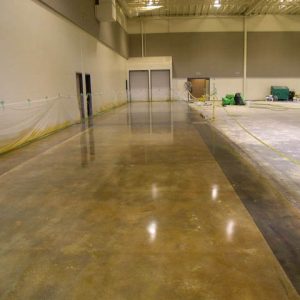
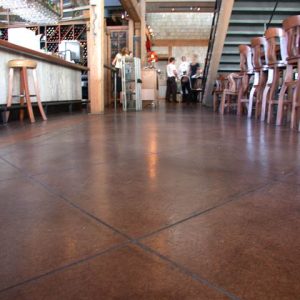
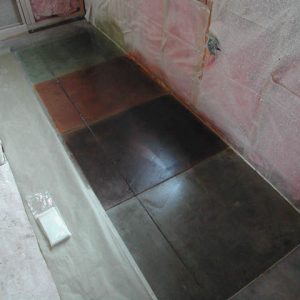
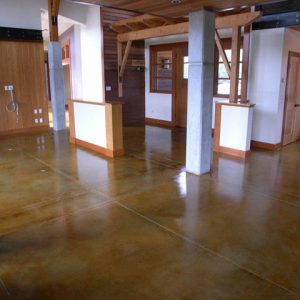
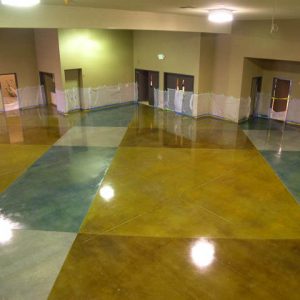
Tip #2: Acid Resistant Brush. Acid stain is designed to be scrubbed into a concrete surface to help ensure full coverage as well as adequate penetration. If you have been looking for an ‘acid resistant brush’ and have only come up with a 6″ inch tiny plastic one, not to worry. Acid stain only has a small percentage of acid and will not dissolve plastic. So any plastic fiber broom or brush will do the trick. You can even use a red or green floor pad as a way to move around the material and scrub it into the floor.
Tip #3: Using a Cloth Mop. When washing and neutralizing an acid stain finish on a roughened surface it is a good idea to use a cloth mop head. Many wool and yarn mops have tiny hairlike strands of fabric that can get caught on the roughened floor and leave behind a hair like residue on the surface. Not always immediately apparent these hairs will often show up in the sealer and then are impossible to remove or repair. By using a cloth (t-shirt material) mop head you will prevent this from happening.
Tip #4: Sealer Application. After all the hard work of the acid stain finish is done it is time to seal and protect the finish. Many think the thicker the better, but this is rarely the case with a sealant system. Thick sealers tend to leave roller lines (if rolled) take longer to dry thereby increasing the chances for things to get stuck in the finish. As well thick coatings over top of porous surfaces like concrete can cause air bubbling from the off gassing.
Concrete that is heating up expands and blows out and concrete that is cooling off shrinks and breaths in. Try to apply sealers during cooling off time (evening) or keep a consistent temperature. Also if possible, dilute the first coat and apply a starter coat, thin and consistently and preferably with a sprayer. Once you establish a sealed surface you can apply a slightly thicker second or third coat.